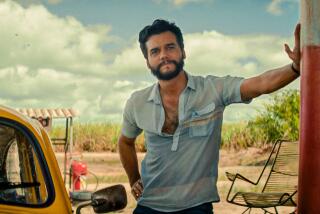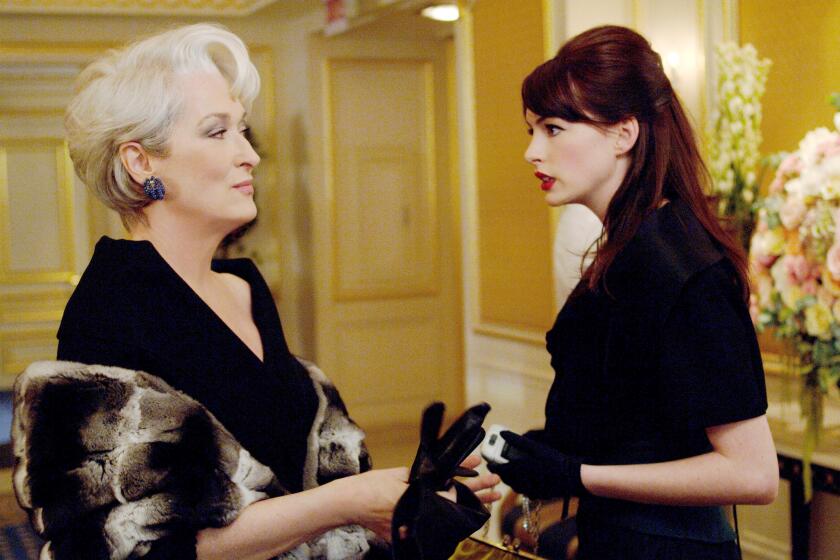L.A. Film Festival honors Leopoldo Torre Nilsson
- Share via
Back in the 1960s, when he was dragging high school chums with him to watch obscure foreign flicks in Los Angeles, David Ansen made a startling discovery.
There on screen at the New Beverly theater was the work of an Argentine filmmaker whose name, Leopoldo Torre Nilsson, would draw blank stares from most Americans, even committed cinephiles. But to Ansen’s youthful eyes, the South American director’s psychologically rich, menacingly expressionistic movies were as striking as those of the French New Wavers and Italian Neorealists, then the celluloid heroes of the art-house set.
As for their subject matter, well, let’s say they ably conveyed the tenor of the times.
“They’re all about sexual repression. Everything was about sexual repression in those days,” said Ansen, the longtime Newsweek film critic and now artistic director of the Los Angeles Film Festival, which is honoring Torre Nilsson this month with a four-film retrospective at the REDCAT theater at Walt Disney Concert Hall.
Even by rarefied film festival standards, reviving the oeuvre of the late director counts as a gutsy leap of faith. Today in his homeland his prints are so hard to find that LAFF staffers were at pains to track them down or even establish who owned the rights to them. Only a handful of his 30-odd films are available on DVD or VHS.
Among the offerings in the festival’s lineup is the director’s last great movie, “The Seven Madmen,” a flawed masterpiece that captured the Silver Bear prize at the 1973 Berlin Film Festival.
A florid melodrama set in the 1930s Buenos Aires demimonde of pimps, hookers, petty crooks, lunatic inventors and revolutionary schemers, the movie, based on two Roberto Arlt novels, also functions as a scathing and prophetic commentary on Argentine society. Woozily edited in parts, but wonderfully acted by some of Argentina’s top screen talent, it’s a tragicomic snapshot of a nation swayed more by irrational beliefs than reason or logic, and deluded with Peronist-populist fantasies of itself as courageous and heroic.
The retrospective’s other films include “The House of the Angel” (1957), which made the director’s international reputation when it screened at Cannes; “The Fall” (1959); and “The Hand in the Trap” (1961). Apart from the presence of Elsa Daniel, the haunting young actress who starred in all three, what the films most conspicuously share are themes of lost innocence and socio-sexual entrapment, deceitful characters with ugly secrets, touches of mordant humor and lushly decadent environments shaped by shadowy, decrepit architecture.
Hebe Tabachnik, a native Argentine and the festival’s programmer of Latin American and short films, said that Torre Nilsson at this stage of his career was drawn to characters who are pulled seductively into unfamiliar worlds and fling open doors that might’ve been better left shut. “Everybody had something to hide or everybody is keeping up the front,” Tabachnik said. “And eventually that crumbles. You end up paying a price.”
Not coincidentally, in the three films starring Daniel, the naive main character is a woman, and the secrets she brings to light have been camouflaged and entombed by the upper-class patriarchy that dominates Argentine society. That perspective may partly reflect the vision of one of Torre Nilsson’s key collaborators, his wife, the writer Beatriz Guido, who helped him adapt the screenplays of her novels “The Hand in the Trap” and “The House of the Angel.”
“She put with a lot of stuff with him, I imagine,” Tabachnik said. “He was a gambler. He would be shooting and she would go to the horsetrack and make bets for him.”
Even so, Tabachnik added, the couple’s partnership was fruitful. “I can’t really say where her ideas will end and where his ideas will come in. Definitely, their creative magic was where you can’t really separate one from the other.”
Torre Nilsson’s subversive visions didn’t endear him to the brutally repressive right-wing dictatorship that seized power in Argentina in 1976 and held it until 1983. The director died of cancer at 54 in 1978.
Torre Nilsson’s work has perpetually divided audiences, even, or perhaps especially, Argentines. “There were people who really liked the stuff he did and people who despised even his masterpieces,” Tabachnik said. “Other people see them as melodramas or as the same story told several times.”
Tabachnik said that it wasn’t until she discovered his late-career work that she began to think of Torre Nilsson as a much more subtle and daring filmmaker than the director she’d known for previously making stodgy epics “about the heroes of my country that were boring and that I was forced to see as a kid.”
She thinks that her country’s posthumous neglect of the artist reflects its lingering ambivalence not only toward him but toward the darker chapters of recent Argentine history. But she believes that his influence can be glimpsed in the work of a new wave of ambitious young Argentine filmmakers such as Lucrecia Martel, whether they recognize it or not.
“I think pretty much every filmmaker knows his work and has drunk in those waters,” she said.
More to Read
Only good movies
Get the Indie Focus newsletter, Mark Olsen's weekly guide to the world of cinema.
You may occasionally receive promotional content from the Los Angeles Times.









